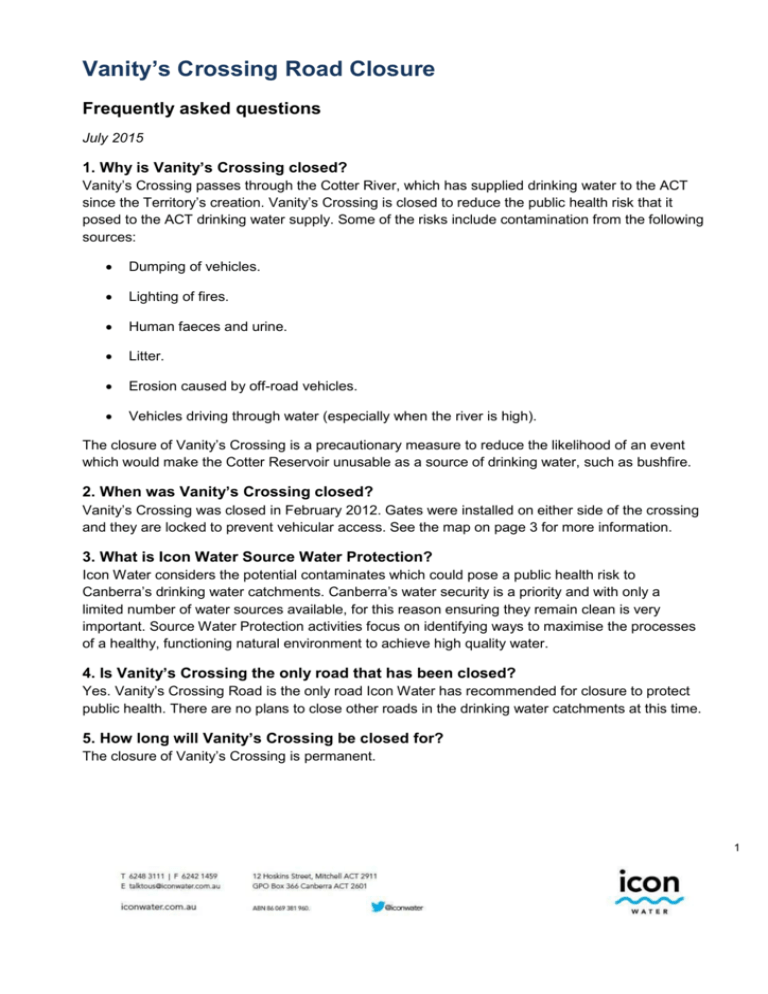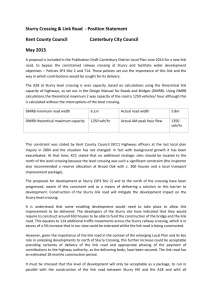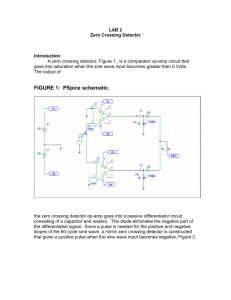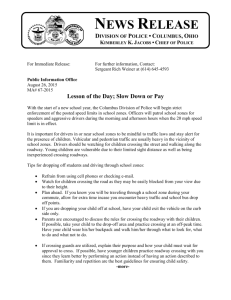Vanity`s Crossing Road Closure
advertisement

Vanity’s Crossing Road Closure Frequently asked questions July 2015 1. Why is Vanity’s Crossing closed? Vanity’s Crossing passes through the Cotter River, which has supplied drinking water to the ACT since the Territory’s creation. Vanity’s Crossing is closed to reduce the public health risk that it posed to the ACT drinking water supply. Some of the risks include contamination from the following sources: Dumping of vehicles. Lighting of fires. Human faeces and urine. Litter. Erosion caused by off-road vehicles. Vehicles driving through water (especially when the river is high). The closure of Vanity’s Crossing is a precautionary measure to reduce the likelihood of an event which would make the Cotter Reservoir unusable as a source of drinking water, such as bushfire. 2. When was Vanity’s Crossing closed? Vanity’s Crossing was closed in February 2012. Gates were installed on either side of the crossing and they are locked to prevent vehicular access. See the map on page 3 for more information. 3. What is Icon Water Source Water Protection? Icon Water considers the potential contaminates which could pose a public health risk to Canberra’s drinking water catchments. Canberra’s water security is a priority and with only a limited number of water sources available, for this reason ensuring they remain clean is very important. Source Water Protection activities focus on identifying ways to maximise the processes of a healthy, functioning natural environment to achieve high quality water. 4. Is Vanity’s Crossing the only road that has been closed? Yes. Vanity’s Crossing Road is the only road Icon Water has recommended for closure to protect public health. There are no plans to close other roads in the drinking water catchments at this time. 5. How long will Vanity’s Crossing be closed for? The closure of Vanity’s Crossing is permanent. 1 Vanity’s Crossing Road Closure Frequently asked questions 6. What contaminants have entered the water catchment to warrant the closing of Vanity’s Crossing? Icon Water carries out regular inspections of the ACT’s catchments to identify areas that may give rise to contaminants and that have the potential to impact negatively upon the safety of our drinking water. The following contaminants have been identified at Vanity’s Crossing. • • • • • • • Faeces and urine from members of the public using the bushland around the crossing as a toilet. Petrochemicals from vehicles driving through the crossing, including accidental spills and leaks, as well as incidental rinsing of chemicals into the river as vehicles drive through. There have been reports of drivers washing their vehicles at the crossing. Petrochemicals, heavy metals and other potentially dangerous chemicals from cars being dumped in the area. In 2013, eight abandoned cars were removed from locations in the Enlarged Cotter Dam reservoir. Pathogen contamination from members of the public swimming in the river. Litter, nappies and toilet paper left by members of the public using the area. Campfires lit in the area by members of the public. These create areas of bare ground, which can lead to erosion and also have the potential to cause bushfires. Damage to the crossing infrastructure due to inappropriate use by 4WD vehicles, which leads to erosion and the release of sediments into the water supply. 7. What is the difference between contamination from human faeces and animal faeces? Contaminants from wild animal faeces are of very low concern when compared with those from humans. This is because wild animals have a low incidence of diseases that pose risks to human health. In contrast, contamination by human faecal matter poses a significant public health risk due to the presence of human pathogens and bacteria. Typically, domestic animals are more likely to carry human disease causing pathogens than wild ones. 8. Is Canberra water still safe to drink? Canberra’s drinking water is compliant with the Australian Drinking Water Guidelines and is safe to drink. Canberra’s treatment plants are equipped to treat water to the standards required by these guidelines. The closure of Vanity’s Crossing is a precautionary measure to reduce the likelihood of an event which would make the Cotter Reservoir unusable as a source of drinking water, such as the 2003 bushfires. More information on the quality of Canberra’s drinking water can be found at www.iconwater.com.au/My-Home/Water-Quality.aspx 2 Vanity’s Crossing Road Closure Frequently asked questions 9. Who do I contact for more information? For information about Icon Water’s Source Water Protection activities visit www.iconwater.com.au or email sourcewater@iconwater.com.au For information about the road closure contact Access Canberra on 13 22 81. 3






